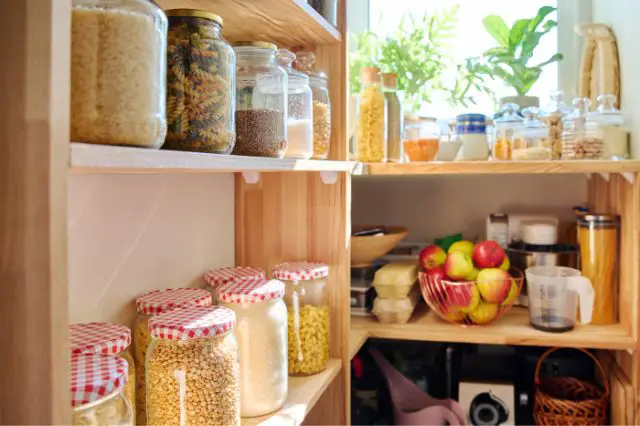The Relationship Between Food Storage, Waste Reduction, and Budgeting in the Modern Kitchen

In today’s fast-paced world, managing a kitchen efficiently has become crucial. The intersection of food storage, waste reduction, and budgeting is a key area where small changes can lead to significant impacts. This article will explore how these elements work together to create a more sustainable, cost-effective, and efficient kitchen environment.
The Importance of Efficient Food Storage
Efficient food storage is the cornerstone of a well-managed kitchen. It extends the shelf life of your groceries, ensures food safety, and helps in maintaining the nutritional value of your food. Proper storage reduces the risk of food spoilage, meaning fewer items end up in the trash. This not only saves money but also minimizes food waste, a growing concern in environmental conservation.
Reducing Waste Through Thoughtful Consumption
Thoughtful consumption starts with mindful shopping and ends with efficient use of purchased items. Plan your meals and buy only what you need, focusing on fresh produce with a shorter shelf life first. This habit reduces the amount of food that goes uneaten and subsequently thrown away, aligning with both budgetary constraints and environmental considerations.
Budgeting: Plan, Purchase, Preserve
Budgeting in the kitchen is more than just cost-cutting; it’s about maximizing value. This involves planning meals around sales and seasonal produce, purchasing in bulk where feasible, and preserving food through techniques like freezing or canning. Such practices not only save money but also ensure you have a well-stocked kitchen with less frequent shopping trips.
Storing Tricky Foods
Storing tricky foods properly can make a significant difference in reducing waste and managing your kitchen budget. Different foods require unique storage methods to maintain their freshness and nutritional value. For example, avocados ripen best at room temperature and can be refrigerated once ripe. Tomatoes should be stored stem-end up, away from direct sunlight, to retain their flavor and texture. Apples, which emit ethylene gas, causing other produce to ripen faster, should be stored separately in a cool place.
This principle extends to various other foods as well. Leafy greens, for instance, should be kept in the crisper drawer of your fridge, ideally in breathable bags to maintain their crispness. Berries can be kept fresh longer by storing them in a dry, covered container in the refrigerator. Herbs have diverse storage needs; some like basil are best kept at room temperature, while others like cilantro require refrigeration. Understanding and applying these specific storage methods will help you make the most of your groceries and minimize waste.
Optimizing Pantry, Refrigerator, and Freezer for Maximum Efficiency
Effective organization of your pantry, refrigerator, and freezer is key to maximizing food life, reducing waste, and enhancing budget efficiency in your kitchen. Starting with your pantry, group items by type and expiration date, placing those near expiration at the front. Utilize clear containers for bulk items like grains and pulses for easy identification. Regular audits of your pantry help in utilizing what you already have, curtailing unnecessary purchases, and preventing food spoilage.
Moving to the refrigerator and freezer, these appliances play a vital role in extending the shelf life of various foods. Understand and maintain the ideal temperature settings in the refrigerator, which is ideal for short-term storage of perishables. Organize the space by grouping similar items together and ensuring that frequently used items are easily accessible. This not only aids in reducing energy consumption as you spend less time with the door open but also helps in monitoring and using foods before they spoil.
The freezer is your tool for long-term preservation. Regular defrosting and cleaning are essential to keep it running efficiently. Organizing frozen goods in a way that you can easily see and access them ensures that you use what you have before buying more. Remember to label and date frozen items, as this will help you use them in a timely manner and avoid freezer burn, which can affect the taste and texture of food.
Smart Techniques for Everyday Efficiency
Smart techniques enhance everyday kitchen efficiency. Use FIFO (First In, First Out) to rotate food, invest in quality containers for airtight storage, and practice batch cooking to save time and resources. Embracing these habits contributes significantly to reducing waste and managing a budget-friendly kitchen.
Tying It All Together
The relationship between food storage, waste reduction, and budgeting in the modern kitchen is integral to a sustainable lifestyle.
- Efficient Food Storage: Extend shelf life and reduce spoilage.
- Thoughtful Consumption: Plan and purchase mindfully.
- Budgeting Practices: Maximize value and minimize waste.
- Special Food Storage: Pay attention to tricky foods like avocados, tomatoes, and apples.
- Organized Pantry: Keep it tidy and use FIFO.
- Refrigerator and Freezer Usage: Store perishables and long-term items correctly.
- Smart Kitchen Techniques: Implement efficient practices for daily use.
By integrating these principles, you can create a kitchen environment that is not only budget-friendly but also environmentally conscious and efficient. Remember, small steps can lead to big changes in both your household and the planet.



